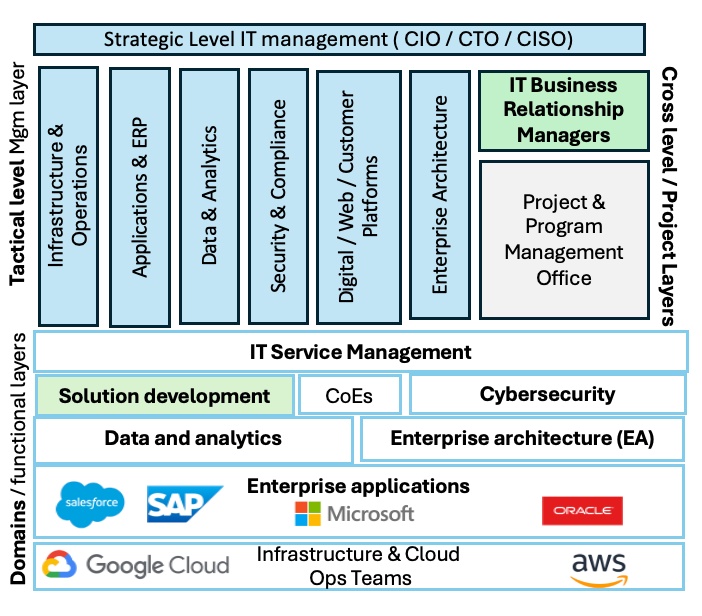Large companies have built massive governance structures – not always in headcount, but mentally and structurally. Development revolves around products: SAP here, MS CRM there, with timelines dictated by IT constraints.
IT often believes it can solve everything and drives multi-layered organizations full of forums and strategies.

IT governance will turn ERP programs into pure IT projects — owned by IT, run by a single vendor, and supported by one integrator. The business just pays, but doesn’t lead neither owns.
But here’s the other common problem:
👉 Operational business processes and value are not the same as ERP transaction processes.
When this difference is ignored, ERP turns expensive and clumsy – and business eventually concludes it doesn’t support operations. The clock speed of change resembles that of the European Union: outcomes end up being more about governance and restriction than about innovation and creating new value.
The fix
- Start with business processes at capability level (L3): define the what and why not only to align today, but to identify where real value lies – hopefully future value for the business.
- Then determine which capabilities naturally belong in ERP, and which do not.
- IT’s role is to enrich this discussion by bringing new technology possibilities – not just products.
👉 ERP is not the business – it’s just one tool for it. But for system integrators, ERP is the business.
0 Comments